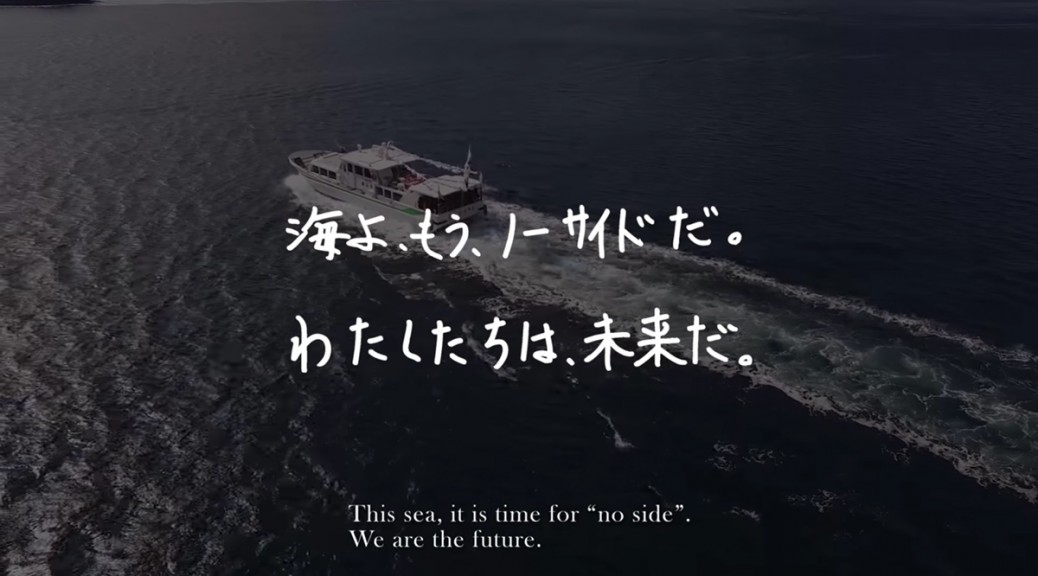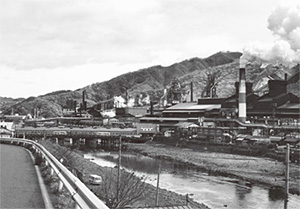KAMAISHI RUGBY

Kamaishi is a fantastic rugby town
Kamaishi City, Iwate Prefecture, is continuing along the path to recovery following the Great East Japan Earthquake and Tsunami disaster of 2011. With the triple strengths of steel, fish and rugby built into the DNA of its people, the rebuilding process has been fortified with the city’s indomitable spirit.
Through the Rugby World Cup 2019™, Kamaishi wants to take the opportunity to show its gratitude to the rest of Japan and the world for the support it has received, and looks forward to the new pride and hope for the future that the tournament will bring. This small video was created to convey these sentiments.
Kamaishi, a City Built on Steel, Fish and Rugby
Located on the rugged coastline of Iwate Prefecture in Northeast Japan, Kamaishi City is known as “The City of Steel, Fish and Rugby”, due to its history as a steel manufacturing town, its delicious seafood and deep love for Rugby. It was the only city chosen from the entire Tohoku region to host the Rugby World Cup 2019™, and the smallest of all other host cities across the country, making it a unique venue in what will be a historic tournament for Japan.

Kamaishi’s rugby and steel history began alongside the modern Japanese industry in 1857, when Nanbu retainer Takato Oshima successfully produced steel for the first time using Japan’s first western-style blast furnace, built in the mountains to the north. After the rapid growth of the industry, the Nippon Steel Kamaishi Works went on to sponsor its own rugby team, the Nippon Steel Kamaishi Rugby Football Club in the 1950s. Despite not having any big-name players, the team rose to the top of the National Championship and secured an historic seven consecutive championship victories between 1978 and 1984. Rugby has been forever loved in Kamaishi ever since, and the people of the city continue to cheer on the current-day iteration of the club, the Kamaishi Seawaves RFC, with their traditional fishing boat flags.

After suffering from catastrophic tsunami disasters in both 1896 and 1933, as well as naval bombardment in the closing days of the second world war, Kamaishi was hit once again by the Great East Japan Earthquake and Tsunami disaster on March 11 2011. Over one thousand lives were lost in Kamaishi alone, and the city suffered unpresented damage to a great many of its residential and business areas. In the years since, Kamaishi has worked tirelessly towards its recovery and, with a great deal of support from other regions of Japan and people all around the world, is determined to emerge stronger and more vibrant than ever.

This history of overcoming disaster time and time again has fostered Kamaishi’s characteristic strength and resilience, but also its open and innovative spirit. Now, on the road to the Rugby World Cup 2019™, Kamaishi is eagerly waiting to welcome visitors from all over the globe and express their gratitude for the world’s support during these difficult years. A small town to be hosting such a huge event, Kamaishi is taking on the challenge with great heart, to make the cup a symbol of the region’s recovery, and pass on new hope and pride for the coming generations.
![KAMAISHI CITY PORTAL SITE [ENTRANCE]](https://en.en-trance.jp/wp-content/themes/kamaishi-fp-portal_2/img/logo_header.png)














